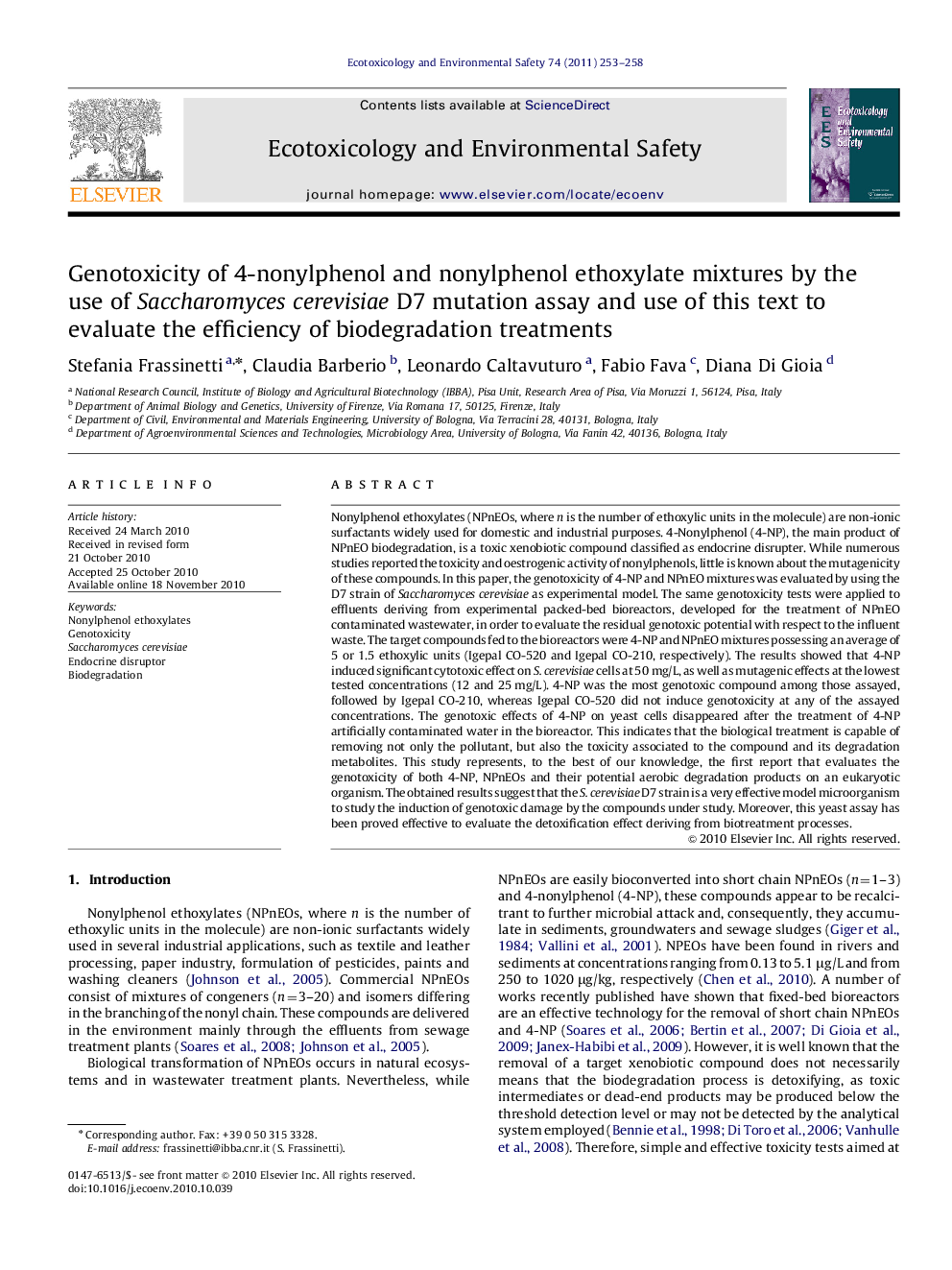| کد مقاله | کد نشریه | سال انتشار | مقاله انگلیسی | نسخه تمام متن |
|---|---|---|---|---|
| 6312469 | 1308507 | 2011 | 6 صفحه PDF | دانلود رایگان |
عنوان انگلیسی مقاله ISI
Genotoxicity of 4-nonylphenol and nonylphenol ethoxylate mixtures by the use of Saccharomyces cerevisiae D7 mutation assay and use of this text to evaluate the efficiency of biodegradation treatments
دانلود مقاله + سفارش ترجمه
دانلود مقاله ISI انگلیسی
رایگان برای ایرانیان
کلمات کلیدی
موضوعات مرتبط
علوم زیستی و بیوفناوری
علوم محیط زیست
شیمی زیست محیطی
پیش نمایش صفحه اول مقاله

چکیده انگلیسی
Nonylphenol ethoxylates (NPnEOs, where n is the number of ethoxylic units in the molecule) are non-ionic surfactants widely used for domestic and industrial purposes. 4-Nonylphenol (4-NP), the main product of NPnEO biodegradation, is a toxic xenobiotic compound classified as endocrine disrupter. While numerous studies reported the toxicity and oestrogenic activity of nonylphenols, little is known about the mutagenicity of these compounds. In this paper, the genotoxicity of 4-NP and NPnEO mixtures was evaluated by using the D7 strain of Saccharomyces cerevisiae as experimental model. The same genotoxicity tests were applied to effluents deriving from experimental packed-bed bioreactors, developed for the treatment of NPnEO contaminated wastewater, in order to evaluate the residual genotoxic potential with respect to the influent waste. The target compounds fed to the bioreactors were 4-NP and NPnEO mixtures possessing an average of 5 or 1.5 ethoxylic units (Igepal CO-520 and Igepal CO-210, respectively). The results showed that 4-NP induced significant cytotoxic effect on S. cerevisiae cells at 50Â mg/L, as well as mutagenic effects at the lowest tested concentrations (12 and 25Â mg/L). 4-NP was the most genotoxic compound among those assayed, followed by Igepal CO-210, whereas Igepal CO-520 did not induce genotoxicity at any of the assayed concentrations. The genotoxic effects of 4-NP on yeast cells disappeared after the treatment of 4-NP artificially contaminated water in the bioreactor. This indicates that the biological treatment is capable of removing not only the pollutant, but also the toxicity associated to the compound and its degradation metabolites. This study represents, to the best of our knowledge, the first report that evaluates the genotoxicity of both 4-NP, NPnEOs and their potential aerobic degradation products on an eukaryotic organism. The obtained results suggest that the S. cerevisiae D7 strain is a very effective model microorganism to study the induction of genotoxic damage by the compounds under study. Moreover, this yeast assay has been proved effective to evaluate the detoxification effect deriving from biotreatment processes.
ناشر
Database: Elsevier - ScienceDirect (ساینس دایرکت)
Journal: Ecotoxicology and Environmental Safety - Volume 74, Issue 3, March 2011, Pages 253-258
Journal: Ecotoxicology and Environmental Safety - Volume 74, Issue 3, March 2011, Pages 253-258
نویسندگان
Stefania Frassinetti, Claudia Barberio, Leonardo Caltavuturo, Fabio Fava, Diana Di Gioia,